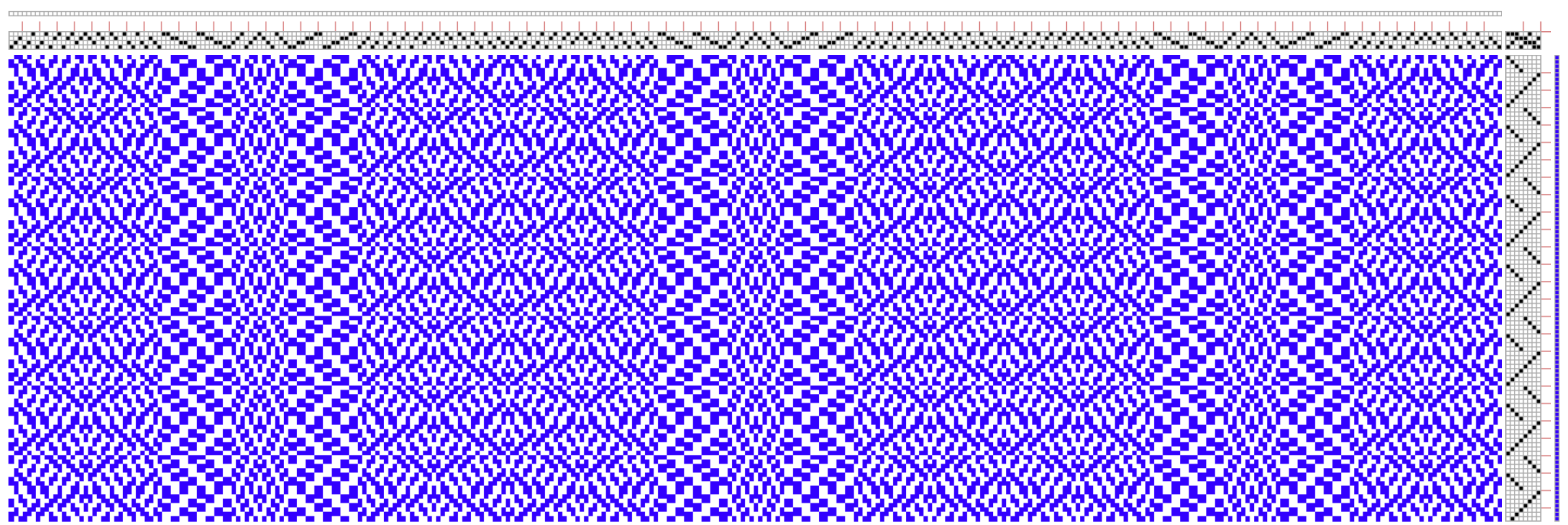All the twills we’ve talked about in What is Twill? and Classic Twills have 45 degree diagonals. Their diagonals may reverse, they may even break, but as long as the warp and weft are woven at the same sett, they always run straight, at a 45 degree angle to both warp and weft.
Angled twills break away from the 45 degree mold by manipulating the threading to make it steeper here and shallower there. The result is complex interlacement that produces patterns and shading very different from classic twills, with straight diagonals at angles other than 45 degrees. The various angles, patterns, and shading combine into very complex looking designs – and sometimes even into curves.
In this course, you’ll learn what steep and shallow “building blocks” are, how to design them yourself, and how to combine them successfully. Then you’ll use the Angled Twill Building Block Library in the Draft Editor to assemble those blocks into a cohesive threading. Finally, you’ll audition tie-ups and treadlings to find the perfect combination to turn that threading into a fantastic final draft you can take to the loom for your next project.
Four shaft weavers will also learn how to reduce an angled threading to fewer shafts and then adjust it to get a pleasing result.
In this course, you’ll learn and use the Draft Editor to practice
- How to design steep and shallow twill building blocks
- How to design complete threadings that combine these building blocks with areas of regular twill
- How to choose the perfect tie-up to set off your angled threading
- How to reduce an angled twill draft designed for eight or more shafts to as few as four
By the end of the course, you’ll have created an original angled twill draft ready to take to the loom – and know exactly how to do it again and again!



